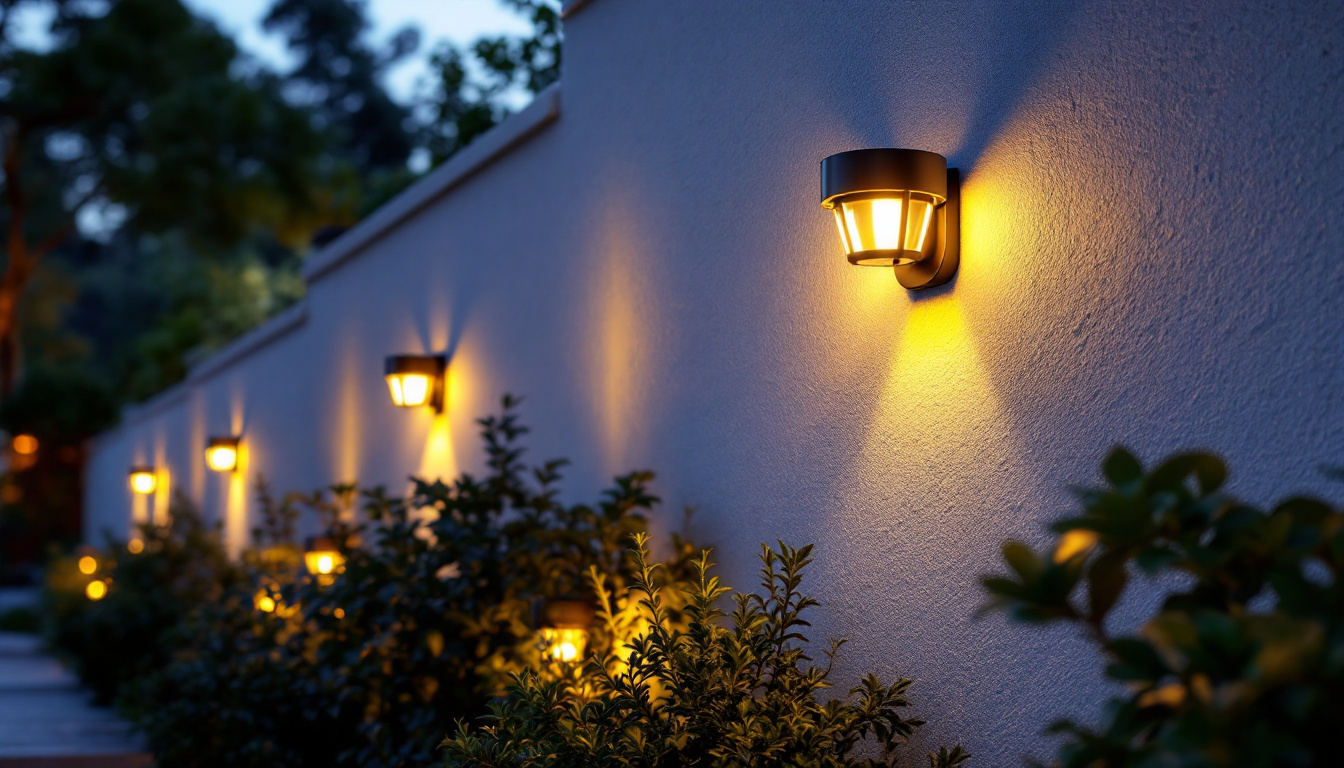
In the world of lighting, understanding lumens is essential for contractors who aim to provide effective and efficient lighting solutions. This guide delves into the significance of 200W lumens, exploring its applications, benefits, and considerations for lighting contractors. Whether you are designing a new installation or upgrading existing systems, this article will equip you with the knowledge needed to make informed decisions.
Before diving into the specifics of 200W lumens, it is crucial to grasp the relationship between lumens and wattage. Lumens measure the total amount of visible light emitted by a source, while wattage indicates the energy consumption of that source. Traditionally, contractors relied on wattage to estimate brightness, but this method has become outdated with the advent of energy-efficient lighting technologies.
As energy-efficient solutions like LED and CFL bulbs gain popularity, the correlation between wattage and brightness has shifted. For instance, a 200W incandescent bulb produces around 3,000 lumens, while an LED bulb with the same wattage can produce significantly more lumens, often exceeding 20,000. This shift emphasizes the importance of understanding lumens as the primary measure of light output.
For lighting contractors, knowing how to calculate and apply lumens is fundamental to designing effective lighting systems. Proper lumen levels ensure that spaces are adequately illuminated without excessive energy consumption. This not only enhances the aesthetic appeal of a space but also contributes to energy efficiency and sustainability.
Moreover, different environments require varying lumen levels. For example, a residential living room may need about 1,500 to 3,000 lumens, while a commercial workspace might require upwards of 5,000 lumens. Understanding these requirements helps contractors tailor their solutions to meet the specific needs of each project. Additionally, factors such as the color of the walls, the height of the ceiling, and the type of activities taking place in the space can further influence the ideal lumen output. For instance, a kitchen may benefit from brighter, cooler lighting to enhance visibility for cooking tasks, while a bedroom might require softer, warmer lighting to create a relaxing atmosphere.
Furthermore, the integration of smart lighting systems has revolutionized how lumens are utilized in both residential and commercial settings. These systems allow users to adjust brightness levels according to their preferences or the time of day, optimizing energy use and enhancing comfort. The ability to control lumens through mobile apps or voice commands not only adds convenience but also promotes energy conservation by allowing users to dim lights when full brightness is unnecessary. As technology continues to evolve, understanding lumens will remain a critical skill for lighting professionals, ensuring they can create adaptable and efficient lighting solutions that meet the demands of modern spaces.
When discussing 200W lumens, it is essential to clarify that the term typically refers to the light output of a fixture or bulb rated at 200 watts. The actual lumen output can vary based on the type of lighting technology used. For instance, a 200W LED fixture can produce significantly more lumens than its incandescent counterpart. This variance is crucial for consumers and businesses alike, as it affects not only the quality of light but also energy consumption and cost-effectiveness over time.
In general, a 200W LED fixture can emit anywhere from 20,000 to 30,000 lumens, making it suitable for large spaces that require high-intensity lighting. This level of brightness is ideal for applications such as warehouses, outdoor sports facilities, and large retail environments where visibility is critical. Additionally, the high lumen output of LED fixtures can enhance safety and productivity in workplaces, as well-lit areas reduce the risk of accidents and improve overall employee morale.
When evaluating the effectiveness of 200W lumens, it’s important to compare different lighting technologies. Each type has its own advantages and limitations that can impact the overall performance of a lighting installation. Understanding these differences can help consumers make informed decisions that align with their specific lighting needs and budget constraints.
Understanding where to apply 200W lumens is vital for lighting contractors. The high lumen output makes it suitable for various applications, particularly in commercial and industrial settings.
In commercial environments, such as retail stores and showrooms, adequate lighting is essential for product visibility and customer experience. A 200W LED fixture can illuminate large areas effectively, enhancing the overall ambiance and encouraging customer engagement.
Furthermore, in office spaces, proper lighting can improve productivity and employee satisfaction. Utilizing 200W lumens in open-plan offices or conference rooms ensures that all areas are well-lit, reducing eye strain and creating a more inviting atmosphere.
In industrial settings, such as warehouses and manufacturing plants, visibility is paramount for safety and efficiency. High-intensity lighting, such as that provided by 200W fixtures, can illuminate large spaces, allowing for safe movement and operation of machinery.
Additionally, outdoor industrial applications, such as loading docks and parking lots, benefit from the high lumen output of 200W fixtures. Proper lighting in these areas not only enhances security but also improves operational efficiency during nighttime hours.
Utilizing 200W lumens in lighting projects offers numerous benefits that can enhance the overall effectiveness of a lighting installation. Understanding these advantages can help contractors make informed decisions when selecting lighting solutions.
One of the most significant benefits of using 200W LED fixtures is their energy efficiency. Compared to traditional lighting options, LEDs consume significantly less energy while providing higher lumen output. This efficiency translates to lower electricity bills and a reduced carbon footprint, making it an attractive option for environmentally conscious clients.
LED fixtures have a longer lifespan compared to incandescent and CFL bulbs, often lasting up to 25,000 hours or more. This longevity reduces the frequency of replacements, leading to lower maintenance costs over time. For contractors, recommending 200W LED fixtures can enhance client satisfaction due to the reduced need for ongoing maintenance.
In addition to energy efficiency and longevity, 200W LED fixtures provide superior light quality. They offer a range of color temperatures, allowing contractors to select the ideal lighting for specific applications. Whether a warm, inviting glow is needed for a restaurant or bright, cool light for a warehouse, 200W LEDs can meet diverse lighting requirements.
While the benefits of 200W lumens are clear, several factors should be considered when selecting lighting solutions for a project. Understanding these considerations can help contractors deliver optimal results for their clients.
Light distribution is a critical factor that influences the effectiveness of a lighting installation. Different fixtures offer varying beam angles, which can impact how light is spread across a space. For large areas, fixtures with a wider beam angle may be necessary to ensure even illumination, while focused beams may be suitable for task lighting.
Contractors should assess the specific lighting needs of each project and select fixtures that provide the appropriate light distribution for the intended application. This consideration can significantly enhance the overall effectiveness of the lighting solution.
The color temperature of a light source affects the ambiance and functionality of a space. Measured in Kelvin (K), color temperatures can range from warm (below 3000K) to cool (above 5000K). For example, warmer light is often preferred in residential settings, while cooler light is more suitable for commercial and industrial applications.
When selecting 200W lumens, contractors should consider the desired color temperature to create the right atmosphere for each space. This attention to detail can enhance the overall experience for occupants and users.
In conclusion, understanding 200W lumens is essential for lighting contractors seeking to provide effective and efficient lighting solutions. By grasping the significance of lumens, comparing different lighting technologies, and recognizing the applications and benefits of 200W lumens, contractors can make informed decisions that enhance their projects.
As the lighting industry continues to evolve, staying informed about advancements in technology and best practices will ensure that contractors remain competitive and capable of meeting the diverse needs of their clients. By leveraging the power of 200W lumens, lighting contractors can illuminate spaces effectively while promoting energy efficiency and sustainability.
Ready to harness the power of 200W lumens for your lighting projects? At LumenWholesale, we provide you with the highest quality, spec-grade lighting products at prices that make sense for your bottom line. Say goodbye to local distributor markups and hello to a vast selection of reliable, high-performance lighting that meets rigorous industry standards. Plus, with free shipping on bulk orders, you can stock up on premium lighting solutions without worrying about hidden fees. Elevate your lighting game and experience the perfect fusion of quality, value, and convenience. Discover Wholesale Lighting at the Best Value today and light up your projects with confidence.

Discover essential tips and common pitfalls for lighting contractors working with LED strip light kits.

Explore the essential questions lighting contractors have about LED retrofitting in this insightful guide.

Discover the top strategies lighting contractors use to install outdoor wall solar lights effectively.

Discover the ultimate guide to dimming LED lights with ease.